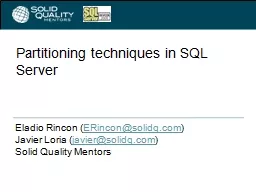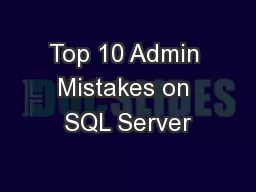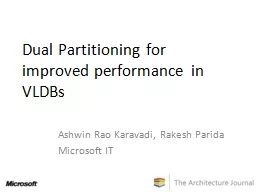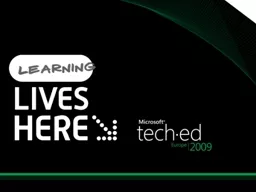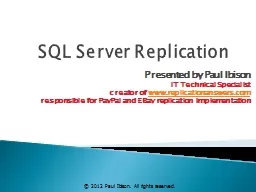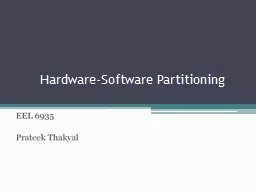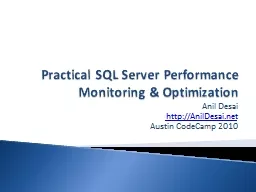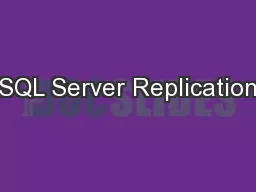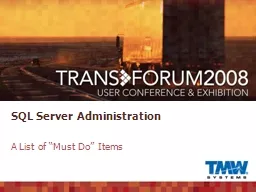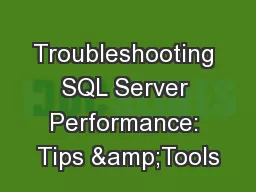PPT-Partitioning techniques in SQL Server
Author : myesha-ticknor | Published Date : 2016-06-13
Eladio Rincon ERinconsolidqcom Javier Loria javiersolidqcom Solid Quality Mentors Agenda 2 2008 Solid Quality Mentors Agenda 3 2008 Solid Quality Mentors
Presentation Embed Code
Download Presentation
Download Presentation The PPT/PDF document "Partitioning techniques in SQL Server" is the property of its rightful owner. Permission is granted to download and print the materials on this website for personal, non-commercial use only, and to display it on your personal computer provided you do not modify the materials and that you retain all copyright notices contained in the materials. By downloading content from our website, you accept the terms of this agreement.
Partitioning techniques in SQL Server: Transcript
Download Rules Of Document
"Partitioning techniques in SQL Server"The content belongs to its owner. You may download and print it for personal use, without modification, and keep all copyright notices. By downloading, you agree to these terms.
Related Documents

